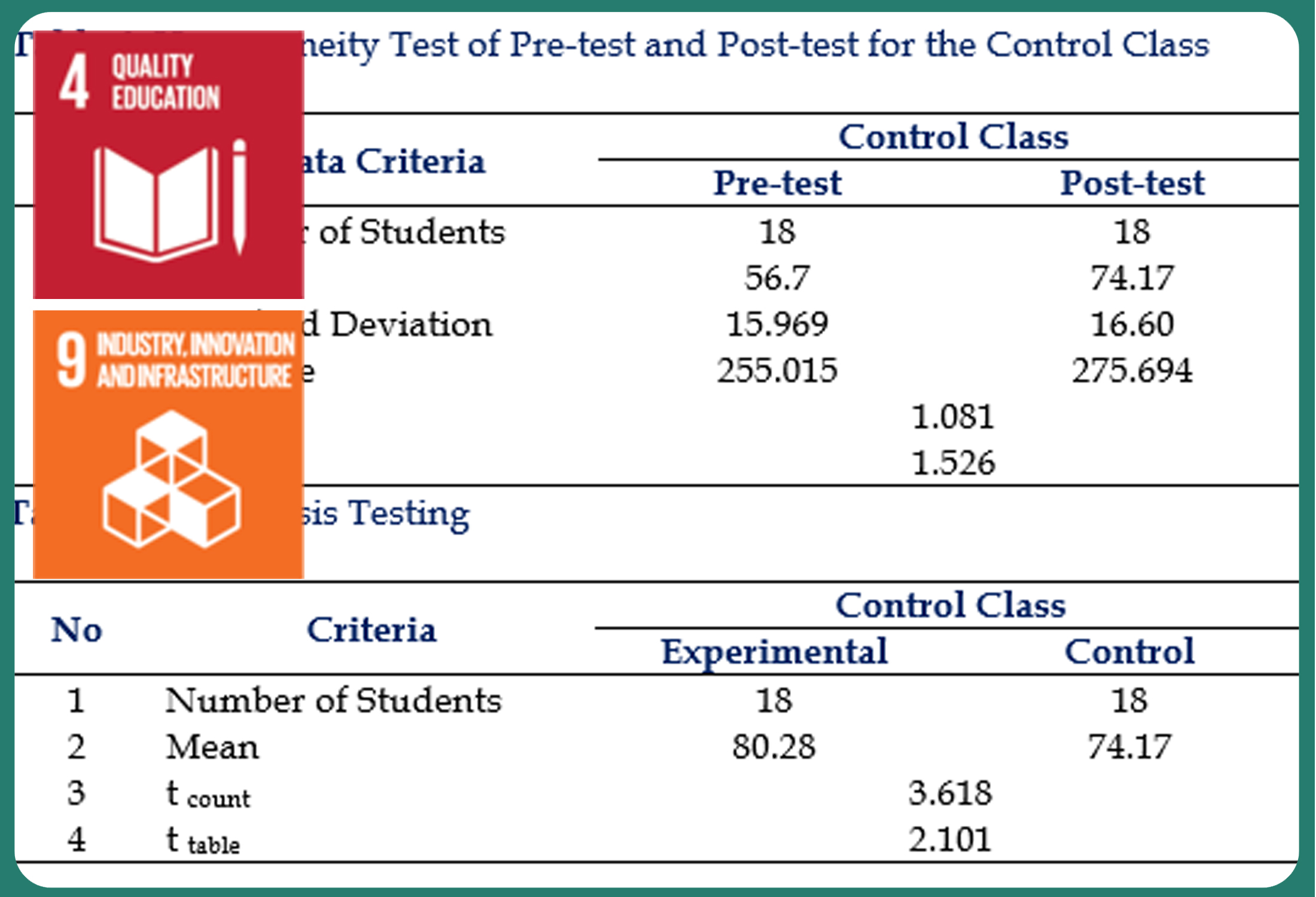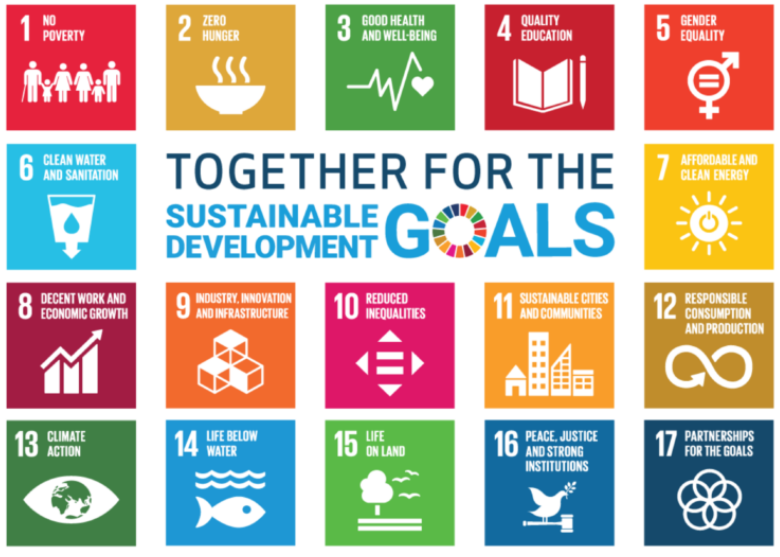Enhancing Learning Outcomes through Kahoot! - Based Educational Games in Engine and Heavy Equipment Courses for Phase F Heavy Equipment Engineering Students
DOI:
https://doi.org/10.24036/javit.v5i1.218Keywords:
Gamification, Kahoot!, Learning Outcomes, Vocational Education, Interactive Learning Media, Technical TrainingAbstract
This study investigates the effect of the Kahoot! educational game on student learning outcomes in the Engine and Heavy Equipment Unit course for Phase F students at SMK Muhammadiyah 1 Pekanbaru. A quasi-experimental design with equivalent control and experimental groups (n=18 each) was employed. Data were analyzed using normality and homogeneity tests, confirming suitability for parametric testing. Hypothesis testing using an independent t-test revealed a significant improvement in the experimental group’s mean post-test score (80.3) compared to the control group (74.2), with t (34) = 3.618, p < 0.05. The pre-test scores showed no significant difference between groups, ensuring comparability. These findings demonstrate that Kahoot! as an interactive gamified learning tool effectively enhances student engagement and academic performance in vocational engineering education. This study contributes novel empirical evidence supporting the integration of gamification in technical skill development, addressing a research gap in vocational ICT-based pedagogy.
Downloads
References
J. Hutson and J. Ceballos, “Rethinking Education in the Age of AI: The Importance of Developing Durable Skills in the Industry 4.0,” J. Inf. Econ., vol. 1, no. 2, pp. 26–35, Jul. 2023, https://doi.org/10.58567/jie01020002.
A. Khang, B. Jadhav, and S. Birajdar, “Industry Revolution 4.0: Workforce Competency Models and Designs,” Des. Work. Manag. Syst. Ind. 4.0 Data-Centric AI-Enabled Approaches, pp. 11–34, Jan. 2023, https://doi.org/10.1201/9781003357070-2.
L. I. González‐pérez and M. S. Ramírez‐montoya, “Components of Education 4.0 in 21st Century Skills Frameworks: Systematic Review,” Sustain. 2022, Vol. 14, Page 1493, vol. 14, no. 3, p. 1493, Jan. 2022, https://doi.org/10.3390/SU14031493.
M. S. Mohamad Saleh, A. Mehellou, M. Huang, and R. Briandana, “Social media impact on sustainable intention and behaviour: a comparative study between university students in Malaysia and Indonesia,” J. Appl. Res. High. Educ., vol. 17, no. 4, pp. 1143–1161, Jun. 2024, https://doi.org/10.1108/JARHE-10-2023-0479.
A. C. Bocar and G. G. Jocson, “Understanding the Challenges of Social Media Users: Management Students’ Perspectives in Two Asian Countries,” J. Business, Commun. Technol., vol. 1, no. 1, pp. 24–34, Jun. 2022, https://doi.org/10.56632/bct.2022.1103.
S. Timotheou et al., “Impacts of digital technologies on education and factors influencing schools’ digital capacity and transformation: A literature review,” Educ. Inf. Technol., vol. 28, no. 6, pp. 6695–6726, Jun. 2023, https://doi.org/10.1007/s10639-022-11431-8.
A. Kustanto, “Bridging the Digital Gap: Analysing the Impact of ICT Diffusion on Income Inequality in Indonesia,” Икономическа мисъл, no. 3, pp. 323–352, 2024.
F. Amin, “Innovative Approaches To Addressing Educational Inequities Lessons From Indonesia’S Remote Learning Programs,” Indones. Stud. Humanit. Soc. Sci. Educ., vol. 1, no. 2, pp. 93–109, Jul. 2024, https://doi.org/10.54783/K9RKZ045.
Mujiburrohman and D. Putri, “The Impact of Social Inequality on Educational Quality in Indonesia: Challenges and Policy Recommendations,” Solo Univers. J. Islam. Educ. Multicult., vol. 3, no. 01, pp. 43–56, Dec. 2025, https://doi.org/10.61455/SUJIEM.V3I01.248.
M. Badali, J. Hatami, S. K. Banihashem, E. Rahimi, O. Noroozi, and Z. Eslami, “The role of motivation in MOOCs’ retention rates: a systematic literature review,” Res. Pract. Technol. Enhanc. Learn., vol. 17, no. 1, pp. 1–20, Dec. 2022, https://doi.org/10.1186/s41039-022-00181-3.
R. Feng, H. N. Alsager, Z. Azizi, and L. Sarabani, “Impact of mind-mapping technique on EFL learners’ vocabulary recall and retention, learning motivation, and willingness to communicate,” Heliyon, vol. 9, no. 6, Jun. 2023, https://doi.org/10.1016/j.heliyon.2023.e16560.
K. H. Yang and H. H. Chen, “What increases learning retention: employing the prediction-observation-explanation learning strategy in digital game-based learning,” Interact. Learn. Environ., vol. 31, no. 6, pp. 3898–3913, Aug. 2023, https://doi.org/10.1080/10494820.2021.1944219.
C. J. Hellín, F. Calles-Esteban, A. Valledor, J. Gómez, S. Otón-Tortosa, and A. Tayebi, “Enhancing Student Motivation and Engagement through a Gamified Learning Environment,” Sustain., vol. 15, no. 19, p. 14119, Sep. 2023, https://doi.org/10.3390/su151914119.
M. Sirotová, V. Michvocíková, and K. M. Rubacha, “Quasi-experiment in the educational reality,” J. Educ. Cult. Soc., vol. 12, no. 1, pp. 189–201, 2021, https://doi.org/10.15503/jecs2021.1.189.201.
J. Choi, J. H. Lee, and B. Kim, “How does learner-centered education affect teacher self-efficacy?The case of project-based learning in Korea,” Teach. Teach. Educ., vol. 85, pp. 45–57, 2019, https://doi.org/10.1016/j.tate.2019.05.005.
D. H. Tong, B. P. Uyen, and L. K. Ngan, “The effectiveness of blended learning on students’ academic achievement, self-study skills and learning attitudes: A quasi-experiment study in teaching the conventions for coordinates in the plane,” Heliyon, vol. 8, no. 12, p. e12657, Dec. 2022, https://doi.org/10.1016/j.heliyon.2022.e12657.
U. M. Mbanaso, L. Abrahams, and K. C. Okafor, “Research Philosophy, Design and Methodology,” Res. Tech. Comput. Sci. Inf. Syst. Cybersecurity, pp. 81–113, 2023, https://doi.org/10.1007/978-3-031-30031-8_6.
J. C. Jackson et al., “Supernatural explanations across 114 societies are more common for natural than social phenomena,” Nat. Hum. Behav., vol. 7, no. 5, pp. 707–717, May 2023, https://doi.org/10.1038/s41562-023-01558-0.
B. Kumatongo and K. K. Muzata, “Research Paradigms and Designs With Their Application in Education,” J. Lexicogr. Terminol., vol. 5, no. 1, pp. 16–32, 2021, Accessed: Jul. 02, 2025. [Online]. Available: https://journals.unza.zm/index.php/jlt.
W. Nuis, N. A. van der Baan, and S. Beausaert, “Mentoring students in higher education for reflection and development of employability competences: a pre-test post-test design,” Educ. Train., vol. 66, no. 4, pp. 408–430, Jul. 2024, https://doi.org/10.1108/ET-07-2023-0290.
L. Rogers and A. MacCormac, “Finding a balance: Using a pre-post test to evaluate the effectiveness of scenario based learning using a blended approach among undergraduate nursing students,” Nurse Educ. Today, vol. 147, p. 106573, Apr. 2025, https://doi.org/10.1016/j.nedt.2025.106573.
S. Qiao, S. K. W. Chu, X. Shen, and S. S. sze Yeung, “The impact of an online gamified approach embedded with self-regulated learning support on students’ reading performance and intrinsic motivation: A randomized controlled trial,” J. Comput. Assist. Learn., vol. 38, no. 5, pp. 1379–1393, Oct. 2022, https://doi.org/10.1111/jcal.12684.
G. M. Chans and M. Portuguez Castro, “Gamification as a Strategy to Increase Motivation and Engagement in Higher Education Chemistry Students,” Comput. 2021, Vol. 10, Page 132, vol. 10, no. 10, p. 132, Oct. 2021, https://doi.org/10.3390/COMPUTERS10100132.
I. M. García-López, E. Acosta-Gonzaga, and E. F. Ruiz-Ledesma, “Investigating the Impact of Gamification on Student Motivation, Engagement, and Performance,” Educ. Sci., vol. 13, no. 8, p. 813, Aug. 2023, https://doi.org/10.3390/educsci13080813.
N. Taşkın and E. Kılıç Çakmak, “Effects of Gamification on Behavioral and Cognitive Engagement of Students in the Online Learning Environment,” Int. J. Hum. Comput. Interact., vol. 39, no. 17, pp. 3334–3345, Oct. 2023, https://doi.org/10.1080/10447318.2022.2096190.
S. Qiao, S. S. sze Yeung, Z. Zainuddin, D. T. K. Ng, and S. K. W. Chu, “Examining the effects of mixed and non-digital gamification on students’ learning performance, cognitive engagement and course satisfaction,” Br. J. Educ. Technol., vol. 54, no. 1, pp. 394–413, Jan. 2023, https://doi.org/10.1111/bjet.13249.
Q. Sun, C. Wang, D. Y. Dai, and X. Li, “Developmental effects of digitally contextualized reading on preschooler’s creative thinking: A quasi-experimental study,” J. Exp. Child Psychol., vol. 259, p. 106307, Nov. 2025, https://doi.org/10.1016/J.JECP.2025.106307.
W. Jurnal, Z. I. Saputri, A. Kata, K. : Pembelajaran, B. Permainan, and R. Pengetahuan, “A Comprehensive Exploration of Effective Learning Strategies Through Engaging and Interactive Kahoot Games in Educational Setting,” Indones. Res. J. Educ., vol. 4, no. 1, pp. 327-331–327 – 331, May 2024, https://doi.org/10.31004/IRJE.V4I1.456.
A. Devitriana and S. Wijirahayu, “The Engaging Interactive Kahoot Application for Vocabulary Mastery and Students’ Motivation,” J. English Teaching, Lit. Appl. Linguist., vol. 9, no. 1, pp. 18–33, Feb. 2025, https://doi.org/10.30587/JETLAL.V9I1.9325.
S. Licorish and A. Lötter, “When Does Kahoot! Provide Most Value for Classroom Dynamics, Engagement, and Motivation?: IS Students’ and Lecturers’ Perceptions,” J. Inf. Syst. Educ., vol. 33, no. 3, Sep. 2022, Accessed: Jul. 02, 2025. [Online]. Available: https://aisel.aisnet.org/jise/vol33/iss3/5.
Q. Zhang and Z. Yu, “A literature review on the influence of Kahoot! On learning outcomes, interaction, and collaboration,” Educ. Inf. Technol., vol. 26, no. 4, pp. 4507–4535, Jul. 2021, https://doi.org/10.1007/s10639-021-10459-6.

Downloads
Published
How to Cite
Issue
Section
License
Copyright (c) 2025 Enjela Dwi Ananda, Ambiyar, Mahesi Agni Zaus, Sadly Firmansyah

This work is licensed under a Creative Commons Attribution 4.0 International License.










